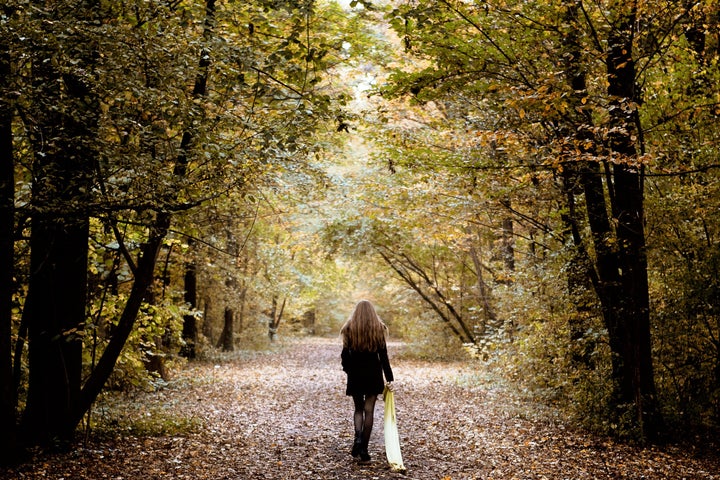
The December 2014 movie version of the musical Into the Woods taps into deep psychological themes within each of us. Purportedly a fairy tale mashup, the movie is rich with metaphorical material regarding journeys of self-exploration. As each character goes into the "Woods" (where a giant lurks waiting to crush them all), he or she learns "some things I never knew before" (in the words of Little Red Riding Hood). The main male lead, The Baker, "becomes a different man" in the words of his ill-fated wife. The ever-indecisive Cinderella finally makes up her mind to leave Prince Charming behind, realizing that she doesn't need a princely hero in order to feel complete. Even young Jack (of Jack and the Beanstalk) discovers that ill-gotten gold won't bring him happiness.
The reason that fairy tales continue to hold our fascination over the centuries, according to the theory of Swiss psychiatrist Carl Jung (1875-1961), is that they speak to the deepest and oldest parts of our psyches. The Woods contain dangerous creatures, to be sure, but rumbling around within them are the unrecognized parts of our personalities that we need in order to achieve wholeness. Jung believed that this process of achieving wholeness, which he called "individuation," continues throughout life. By the time we're in midlife, we've gotten close to, if not having completed, this process. Your yin will find its yang and you'll be psychologically more balanced than you were when you were younger.
The dominant character in the movie is undoubtedly The Witch (played to perfection by Meryl Streep). She's not a specific witch from any specific fairy tale but instead represents a force that brings the disparate fairy tales together. The Baker and the Baker's Wife are living under a curse that has made them barren; the Witch prescribes the seemingly impossible list of ingredients they'll need to reverse the curse. The Witch punishes Rapunzel (her daughter) for what she sees as betrayal (when Rapunzel becomes romantically involved with a Prince). She regularly upbraids the other characters for their weaknesses, and by the end, is so fed up with them that she disappears from the scene entirely.
The Witch's journey through the Woods leads her not to increased wisdom, unlike the other characters, but to a restoration of her youthful beauty and glamour. This is an interesting journey in and of itself, as her rejection of her physical aging taps into our own fears and stereotypes about getting older. We first see her, though, as the embodiment of the negatively-portrayed aging woman with wrinkles, thinning and graying hair, a shriveled body, and an angry if not evil disposition. Ironically, even in her supposed efforts to help the Baker and his Wife, she's actually just seeking her own salvation, as the curse that provides them with a child also provides her with eternal youth (more on this soon).
Although we might think of the Witch as the personification of the so-called "double standard" of aging in which older women are viewed more negatively than are older men, it's possible that this view of aging women is more typical of fairy tales than of real life today. Evaluating the attitudes toward older men and women (ages 65+) among young, middle-aged, and older adults, a team of German researchers headed by Anna Kornadt (2013) showed that it's only in certain life domains (finances and work) that older women are seen negatively compared to older men.
Nevertheless, if we extrapolate from the Witch's trajectory through this movie of failing to grow psychologically and, instead, growing younger, it suggests that not all journeys through our inner worlds are accompanied by growth. The process of individuation in midlife is one that requires us to spend time with our inner demons and if we don't, it's at our own peril.
The Witch, in seeking eternal youth, fails to grow up, just as can happen to older people in the real world today who seek to look forever young. Aging may come with its physical limitations, and lamentations, but it can also stimulate us to achieve positive psychological growth. Canadian researcher Catherine Marshall and colleagues (2014) report that women who come to terms with their own aging bodies are able to achieve greater overall self-acceptance. Although the Witch objectively becomes more "beautiful" by the end of her journey, she's also become more cynical and unfulfilled.
In sum, midlifers have much to learn from the wisdom of Stephen Sondheim and James Lapine's wonderful allegorical odyssey. Enjoy the alluring music, terrific acting, and fabulous costumes, and see what you can learn about your own personal Woods in the process.
Sources:
Kornadt, A. E., Voss, P., & Rothermund, K. (2013). Multiple standards of aging: Gender-specific age stereotypes in different life domains. European Journal of Ageing, 10(4), 335-344. doi:10.1007/s10433-013-0281-9
Marshall, C. E., Lengyel, C. O., & Menec, V. H. (2014). Body image and body work among older women: A review. Ethnicity and Inequalities In Health And Social Care, 7(4), 198-210. doi:10.1108/EIHSC-11-2013-0042
